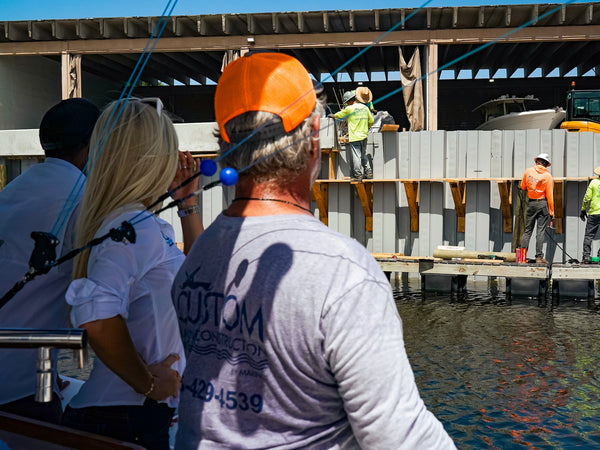CMC specializes in the installation of lifts and floating docks for vessels of all sizes.
BOAT LIFTS



SPECIALIZED in ALL TYPES
Be it bottom-standing, floating, or suspended-lifts, CMC are masters in the crafts of waterfront vessel protection.



BOAT SLIPS EXPLAINED
A boat lift isa mechanical device designed to raise a boat out of the water and support it above the waterline, typically on a dock or waterfront structure.This method of boat storage offers several advantages, including protecting the hull from damage and marine growth, minimizing corrosion, and providing convenient access for boarding and maintenance.
PURPOSE:
Boat lifts primarily serve to keep a boat safely stored out of the water when not in use, preventing damage from prolonged water exposure.
HOW IT WORKS:
Boat lifts utilize a variety of mechanisms, including cables, pulleys, hydraulics, or air-filled chambers, to lift the boat. The boat rests on a cradle or bunk system attached to the lift mechanism.
BENEFITS:
PROTECTION: Keeping the boat out of the water shields the hull from potential damage caused by waves, debris, and marine organisms (barnacles, algae, etc.).
CORROSION PREVENTION: Reducing the boat's exposure to saltwater minimizes corrosion on the hull and other metal parts.
CONVENIENCE: Boat lifts offer easy access for launching, boarding, and performing maintenance tasks.
SECURITY: Some lifts deter theft by making it more challenging to remove a boat from the lift.
Types of Boat Lifts:
VERTICAL LIFTS: These use a cable and pulley system to raise and lower the boat vertically.
HYDRAULIC LIFTS: These utilize hydraulic rams to lift the boat, often with a cantilever or direct-drive system.
FLOATING LIFTS: These are anchored to the bottom and float on the water, lifting the boat with air-filled chambers.
ELEVATOR LIFTS: These are attached to a dock or seawall and lift the boat vertically.
Considerations
Factors like boat size, water depth, and the type of dock or waterfront structure influence the choice of boat lifts.





